- Home
- James Rollins
Ice Hunt
Ice Hunt Read online
ICE HUNT
James Rollins
To Dave Meek,
the next star on the horizon
Contents
Dedication
Map
Ice Station Grendel
Personnel
Eskimo Village Vanishes!
Prologue
ACT ONE: Snow Flight
ONE Blood Lure
TWO Cat and Mouse
THREE Trap Lines
FOUR Airborne
ACT TWO: Fire and Ice
FIVE Slippery Slope
SIX Icebound
SEVEN Running Silent
EIGHT Hunter/Killer
NINE Dead End
TEN Blood on the Ice
ACT THREE: Feeding Frenzy
ELEVEN Timeless
TWELVE Raiding Parties
THIRTEEN Run of the Station
FOURTEEN Three Blind Mice
FIFTEEN Storm Warning
SIXTEEN Fathers and Sons
SEVENTEEN Trial by Fire
EIGHTEEN North Star
Author’s Note
Epilogue
Acknowledgments
About the Author
By James Rollins
Credits
Copyright
About the Publisher
Personnel
CIVILIAN
(1) Matthew Pike, an Alaska Fish and Game warden
(2) Jennifer Aratuk, sheriff for the Nunamiut and Inupiat tribes
(3) Junaquaat (John) Aratuk, retired
(4) Craig Teague, reporter for the Seattle Times
(5) Bennie and Belinda Haydon, owners of an ultralight sight-seeing company
(6) Bane, retired search-and-rescue dog, wolf/malamute cross
OMEGA RESEARCHERS
(1) Dr. Amanda Reynolds, an American engineer
(2) Dr. Oskar Willig, a Swedish oceanographer
(3) Dr. Henry Ogden, an American biologist
(4) Dr. Lee Bentley, a NASA researcher in material sciences
(5) Dr. Connor MacFerran, a Scottish geologist
(6) Dr. Erik Gustof, a Canadian meteorologist
(7) Lacy Devlin, a geology postgrad
(8) Magdalene, Antony, and Zane, biology postgrads
UNITED STATES MILITARY
(1) Gregory Perry, captain of the Polar Sentinel
(2) Roberto Bratt, lieutenant commander and XO of the Polar Sentinel
(3) Kent Reynolds, admiral and commander of the Pacific Fleet
(4) Paul Sewell, lieutenant commander and head of base security for Omega
(5) Serina Washburn, lieutenant
(6) Mitchell Greer, lieutenant
(7) Frank O’Donnell, petty officer
(8) Tom Pomautuk, ensign
(9) Joe Kowalski, seaman
(10) Doug Pearlson, seaman
(11) Ted Kanter, master sergeant, Delta Forces
(12) Edwin Wilson, command sergeant major, Delta Forces
RUSSIAN MILITARY
(1) Viktor Petkov, admiral and commander of the Russian Northern Fleet
(2) Anton Mikovsky, captain first rank of the Drakon
(3) Gregor Yanovich, diving officer and XO of the Drakon
(4) Stefan Yurgen, member of Leopard ops
ARCHIVED RECORD:
THE TORONTO DAILY STAR,
NOVEMBER 23, 1937
ESKIMO VILLAGE VANISHES!
RCMP Confirms Trapper’s Story
Special to the Star,
Lake Territory, November 23. The inspector for the Royal Canadian Mounted Police returned today to confirm the disappearance of an Eskimo village in the Northern Lakes region. Ten days ago, fur trapper Joe LaBelle contacted the RCMP to report a chilling discovery. While running a trapline, LaBelle snowshoed out to an isolated Eskimo village on the shores of Lake Anjikuni only to discover every inhabitant—man, woman, and child—had vanished from their huts and storehouses. “It was as if every one of them poor folk up and took off with no more than the shirts on their backs.”
Inspector Pierre Menard of the RCMP returned with his team’s findings today and confirmed the trapper’s story. The village had indeed been found abandoned under most strange circumstances. “In our search, we discovered undisturbed foodstuff, gear, and provisions but no sign of the villagers. Not a single footprint or track.” Even the Eskimos’ sled dogs were found buried under the snow, starved to death. But the most disturbing discovery of all was reported at the end: the Eskimos’ ancestral graves were found excavated and emptied.
The RCMP promises to continue the search, but for now the fate of the villagers remains a mystery.
Prologue
FEBRUARY 6, 11:58 A.M.
538 KILOMETERS NORTH OF ARCTIC CIRCLE
FORTY FATHOMS UNDER THE POLAR ICE CAP
The USS Polar Sentinel was gliding through the dark ocean. The sub’s twin bronze screws churned silently, propelling the Navy’s newest research submarine under the roof of ice. The warning bells of the proximity alarms echoed down the length of the vessel.
“Sweet mother, what a monster,” the diving officer mumbled from his post, bent over a small video monitor.
Captain Gregory Perry didn’t argue with Commander Bratt’s assessment. He stood atop the control room’s periscope stand. His eyes were fixed to the scope’s optical piece as he studied the ocean beyond the sub’s double hull of titanium and plate-carbon steel. Though it was midday, it was still winter in the Arctic. It had been months since anyone had seen the sun. Around them the waters remained dark. The plane of ice overhead stretched black as far as he could see, interrupted only by occasional blue-green patches of thinner ice, filtering the scant moonlight of the surface world. The average thickness of the polar ice cap was a mere ten feet, but that did not mean the roof of their world was uniform or smooth. All around, jagged pressure ridges jutted like stalactites, some delving down eighty feet.
But none of this compared to the inverted mountain of ice that dropped into the depths of the Arctic Ocean ahead of them, a veritable Everest of ice. The sub slowly circled the peak.
“This baby must extend down a mile,” Commander Bratt continued.
“Actually one-point-four miles,” the chief of the watch reported from his wraparound station of instruments. A finger traced the video monitor of the top-sounding sonar. The high-frequency instrument was used to contour the ice.
Perry continued to observe through the periscope, trusting his own eyes versus the video monitors. He thumbed on the sub’s xenon spotlights, igniting the cliff face. Black walls glowed with hues of cobalt blue and aquamarine. The sub slowly circled its perimeter, close enough for the ice-mapping sonar to protest their proximity.
“Can someone cut those damn bells?” Perry muttered.
“Aye, sir.”
Silence settled throughout the vessel. No one spoke. The only sound was the muffled hum of the engines and the soft hiss of the oxygen generator. Like all subs, the small nuclear-powered Polar Sentinel had been designed to run silent. The research vessel was half the size of its bigger brothers. Jokingly referred to as Tadpole-class, the submarine had been miniaturized through some key advances in engineering, allowing for a smaller crew, which in turn allowed for less space needed for living quarters. Additionally, built as a pure research vessel, the submarine was emptied of all armaments to allow more room for scientific equipment and personnel. Still, despite the stripping of the sub, no one was really fooled. The Polar Sentinel was also the test platform for an upcoming generation of attack submarine: smaller, faster, deadlier.
Technically still on its shakedown cruise, the sub had been assigned to the Omega Drift Station, a semipermanent U.S. research facility built atop the polar ice cap, a joint project between various government science agencies, including the Nat
ional Science Foundation and the National Oceanographic and Atmospheric Administration.
The crew had spent the last week surfacing the sub through open leads between ice floes or up through thinly iced-over lakes, called polynyas. Their task was to implant meteorological equipment atop the ice for the scientific base to monitor. But an hour ago, they had come upon this inverted Everest of ice.
“That’s one hell of an iceberg,” Bratt whistled.
A new voice intruded. “The correct term is an ice island.”
Perry glanced from the periscope.
A gray-haired man with a neatly trimmed beard stooped through the hatch to enter the control room from the forward research decks. It was Dr. Oskar Willig, the Swedish oceanographer. He was accompanied by an ensign. The aging but wiry and hard-eyed Swede waved a dismissive hand toward the video monitor and nodded to Captain Perry. “It’s a much more spectacular view from Cyclops. In fact, Dr. Reynolds asked to see if you’d join us there. We’ve discovered something intriguing.”
After a long moment, Perry nodded and folded up the periscope grips. He twisted the hydraulic control ring, and the stainless-steel pole with its optic module descended into the housing below. “Commander Bratt, you have the conn.” He stepped down from the periscope stand to join Dr. Willig.
Commander Bratt raised one bushy eyebrow as he passed by. “You’re going to Cyclops? With all this ice around? You’re a braver man than I am, Captain. True balls of brass.”
“Not brass.” Perry tapped a knuckle on a wall plate. “Titanium.”
This earned a chuckle from his second-in-command.
The Swedish oceanographer’s eyes were bright with excitement as Perry joined him. “In all my years, I’ve never seen such a spectacular example of an ice island.”
Perry ran a hand over the stubble of his red hair, then motioned the older doctor ahead of him.
The doctor nodded, turning, but he continued to speak rapidly, lecturing as if still in his classroom at the University of Stockholm. “These islands are rare. They originate when giant icebergs calve off the mainland glaciers. Then ocean currents drive these floating mountains into the polar ice cap, where they’re frozen in place. Eventually, during the years of thawing and refreezing, they become incorporated into the cap itself.” Dr. Willig glanced back at the captain as he climbed through the forward hatch. “Somewhat like almonds in a chocolate bar, you might say.”
Perry followed, bending his own six-foot frame through the opening. “But what’s so exciting about such a discovery? Why did Dr. Reynolds insist upon us mapping around this embedded almond?”
Dr. Willig bobbed his head, leading the way down the main passage and through the research section of the sub. “Besides the rarity of these ice islands, because they have been calved from glaciers, they contain very old ice and many even hold boulders and sections of terra firma. They’re frozen glimpses of the distant past. Can you just imagine?”
Perry followed, urging the doctor onward.
“We dare not lose this chance. We may never find such an example again. The polar ice cap covers an area twice the size of your United States. And with the cap’s surface worn featureless by winter winds and summer melts, such islands are impossible to discern. Not even NASA satellites could pinpoint such discoveries. Stumbling upon this mountain is a scientific gift from God.”
“I don’t know about God, but it is intriguing,” Perry conceded. He had been granted command of the Sentinel because of his background and interest in the Arctic region. His own father had served aboard the USS Nautilus, the first submarine to cross the Arctic Ocean and pass under the North Pole back in 1958. It was an honor to be adding to his father’s legacy up here, to captain the Navy’s newest research vessel.
Dr. Willig pointed to a sealed hatch at the end of the corridor. “Come. You need to see this with your own eyes.”
Perry waved him on, glancing over his shoulder. The Polar Sentinel was divided into two sections. Aft of the control station were the crew’s living quarters and the engineering levels. Forward of the bridge lay the research labs. But ahead, in the nose of the boat, where normally the torpedo room and sonar boom would be on a Virginia-class submarine, was the strangest modification of a naval sub.
“After you,” Dr. Willig offered as they reached the sealed door.
Perry opened the hatch and pushed his way into the room. The muted lighting of the Sentinel ill prepared him for the blinding brilliance of the next chamber. He shielded his eyes as he entered.
The upper shell of the former torpedo room had been replaced with a canopy of foot-thick Lexan polycarbonate. The clear plastic shell arched overhead and in front, allowing an uninterrupted view of the seas around the Sentinel, a window upon the watery world. Viewed from outside, the Lexan canopy looked like a single glass eye, hence its nickname: Cyclops.
Perry ignored the handful of scientists off to the sides, bent over equipment and monitors. The Navy men stood straighter and nodded to their captain. He returned their acknowledgment, but it was impossible to truly break his gaze from the view out Cyclops.
Ahead, a voice spoke from the heart of the glare: “Impressive, isn’t it?”
Perry blinked away his blindness and spotted a slender figure in the room’s center, limned in aquamarine light. “Dr. Reynolds?”
“I couldn’t resist watching from here.” He heard the warm smile in the woman’s voice. Dr. Amanda Reynolds was the nominal head of Omega Drift Station. Her father was Admiral Kent Reynolds, commander of the Pacific submarine fleet. Raised a Navy brat, the doctor was as comfortable aboard a submarine as any sailor wearing the double dolphins of the fleet.
Perry crossed to her. He had first met Amanda two years ago when he was granted his captain’s bars. It had been at a social function given by her father. In that one evening, he had inadvertently insulted her potato salad, almost broken her toe during a short dance, and made the mistake of insisting that the Cubs would beat the San Francisco Giants in an upcoming game, losing ten dollars in the bargain. Overall it had been a great evening.
Perry cleared his throat and made sure Amanda was looking at him. “So what do you think of Cyclops?” he asked, speaking crisply so she could read his lips. She had lost her hearing at the age of thirteen as a result of a car accident.
Amanda Reynolds glanced overhead, turning slightly forward. “It’s everything my father dreamed it would be.”
She stood under the arch, surrounded on all sides by the Arctic Ocean. She appeared to be floating in the sea itself. Presently she leaned on one hip, half turned. Her sweep of ebony hair was snugged into an efficient ponytail. She wore one of the Navy’s blue underway uniforms, crisply pressed.
Perry joined her, stepping out under the open ocean. Being a career submariner, he understood his crew’s discomfort with this room. Although fire was the main fear on any submarine, no one completely trusted the foot-thick plastic shell as an alternative for a double hull of titanium and carbon plate—especially with so much ice around.
He had to resist the urge to hunch away from the plastic canopy. The weight of the entire Arctic Ocean seemed to hang overhead.
“Why did you call me up here?” he asked, touching her arm to draw her eyes.
“For this…something amazing.” Amanda’s voice tremored with excitement. She waved an arm forward. Beyond Cyclops, the sub’s lamps illuminated the wall of ice slowly passing by the front of the vessel. Standing here, it felt as if they were motionless, and it was the ice island instead that was turning, revolving like a giant’s toy top in front of them. This close, the entire cliff face glowed under the illumination of the sub’s xenon spotlights. The ice seemed to stretch infinitely up and down.
Without a doubt, it was both a humbling and starkly chilling sight, but Perry still did not understand why his presence had been requested.
“We’ve been testing the new DeepEye sonar system,” Amanda began to explain.
Perry nodded. He was familiar with her r
esearch project. The Polar Sentinel was the first submarine to be equipped with her experimental ice-surveying system, a penetrating sonar, a type of X ray for ice. The device had been based on Dr. Reynolds’s own design. Her background was in geosciences engineering, specializing in the polar regions.
She continued, “We were hoping to test it on the island here and see if we could discern any boulders or terrestrial matter inside.”
“And did you find something?” He still could not take his eyes off the slowly turning cliff of ice.
Amanda stepped to the side, toward a pair of men hunched over equipment. “Our first couple passes failed to reveal anything, but it’s like peeling an onion. We had to be careful. The sonar waves of the DeepEye cause minute vibrations in the ice. They actually heat it up slightly. So we had to proceed one layer at a time as we scanned the island. Slow, meticulous work. Then we discovered—”
Perry still stood under the eye of Cyclops. He was the first to see the danger as the sub edged around a thick ridge of ice. Ahead, boulder-sized chunks of ice floated and bounced up the cliff face, an avalanche in reverse. But ahead, a large dark crack skittered across the face of the ice. A monstrous section of cliff face suddenly leaned toward the slow-moving ship, toppling out toward them. They were going to collide with it.
With a gasp, he dove for the intercom. “Captain to the bridge!” he yelled.
“On it, Captain,” Commander Bratt answered, tense. “Flooding negative.”
Instantly Perry felt the familiar tug on the sub as thousands of pounds of water drowned the emergency tanks.

 The Skeleton Key
The Skeleton Key The Last Oracle
The Last Oracle The Judas Strain
The Judas Strain Black Order
Black Order Sandstorm
Sandstorm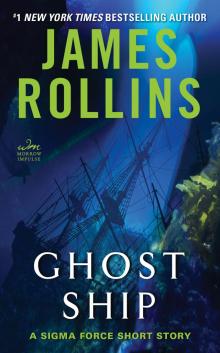 Ghost Ship
Ghost Ship The Devil Colony
The Devil Colony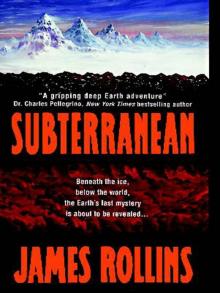 Subterranean
Subterranean The Doomsday Key
The Doomsday Key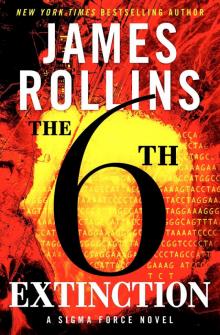 The 6th Extinction
The 6th Extinction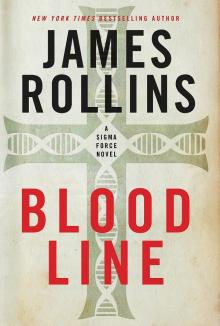 Bloodline
Bloodline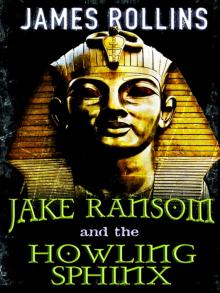 Jake Ransom and the Howling Sphinx
Jake Ransom and the Howling Sphinx The Midnight Watch
The Midnight Watch Map of Bones
Map of Bones The Demon Crown
The Demon Crown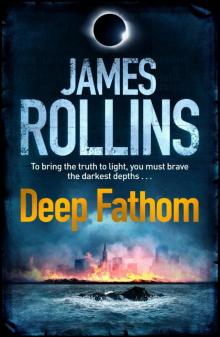 Deep Fathom
Deep Fathom Sigma Guide
Sigma Guide Kowalski's in Love
Kowalski's in Love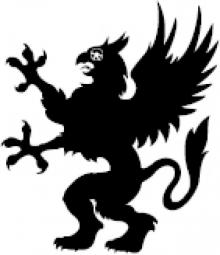 Jake Ransom and the Skull King's Shadow
Jake Ransom and the Skull King's Shadow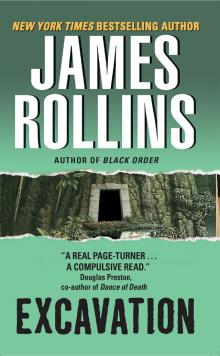 Excavation
Excavation The Seventh Plague
The Seventh Plague Altar of Eden
Altar of Eden Unrestricted Access: New and Classic Short Fiction
Unrestricted Access: New and Classic Short Fiction Indiana Jones and the Kingdom of the Crystal Skull
Indiana Jones and the Kingdom of the Crystal Skull Crucible
Crucible The Eye of God
The Eye of God The Bone Labyrinth
The Bone Labyrinth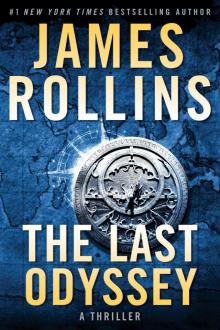 The Last Odyssey: A Thriller
The Last Odyssey: A Thriller Unrestricted Access
Unrestricted Access Amazonia
Amazonia Blood Brothers: A Short Story Exclusive
Blood Brothers: A Short Story Exclusive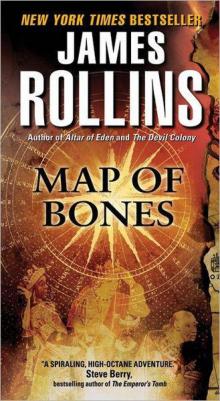 Map of Bones: A Sigma Force Novel
Map of Bones: A Sigma Force Novel The Skeleton Key (sigma force)
The Skeleton Key (sigma force)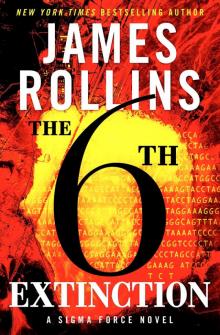 Sigma Force 10 - The Sixth Extinction
Sigma Force 10 - The Sixth Extinction Innocent Blood
Innocent Blood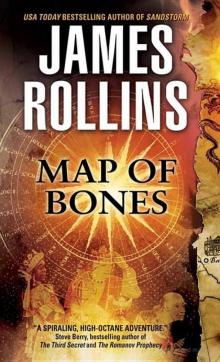 Map of Bones sf-2
Map of Bones sf-2 The Eye of God: A Sigma Force Novel
The Eye of God: A Sigma Force Novel The Eye of God: A Sigma Force Novel sf-9
The Eye of God: A Sigma Force Novel sf-9 The Pit
The Pit Indiana Jones and the The Kingdom Of The Crystal Skull
Indiana Jones and the The Kingdom Of The Crystal Skull The Last Oracle (2008) sf-5
The Last Oracle (2008) sf-5 City of Screams
City of Screams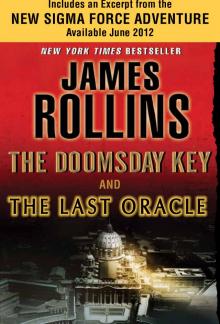 The Doomsday Key and The Last Oracle with Bonus Excerpts
The Doomsday Key and The Last Oracle with Bonus Excerpts The Judas Strain sf-4
The Judas Strain sf-4 Blood Infernal
Blood Infernal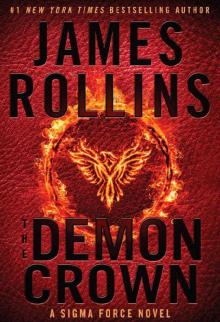 The Demon Crown: A Sigma Force Novel
The Demon Crown: A Sigma Force Novel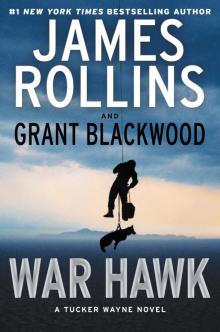 War Hawk: A Tucker Wayne Novel
War Hawk: A Tucker Wayne Novel SANDSTORM sf-1
SANDSTORM sf-1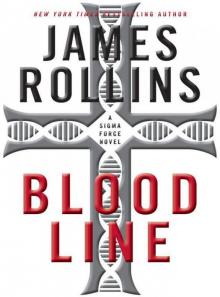 Bloodline: A Sigma Force Novel
Bloodline: A Sigma Force Novel Amazonia: a novel
Amazonia: a novel The Last Oracle: A Sigma Force Novel
The Last Oracle: A Sigma Force Novel City of Screams (the order of the sanguines)
City of Screams (the order of the sanguines)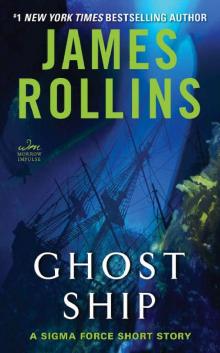 Ghost Ship: A Sigma Force Short Story
Ghost Ship: A Sigma Force Short Story The Doomsday Key: A Sigma Force Novel
The Doomsday Key: A Sigma Force Novel